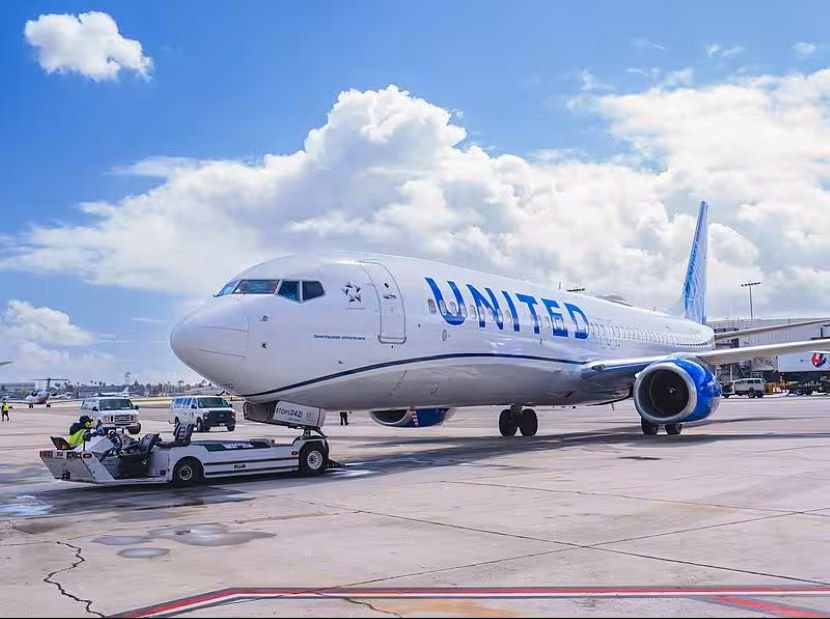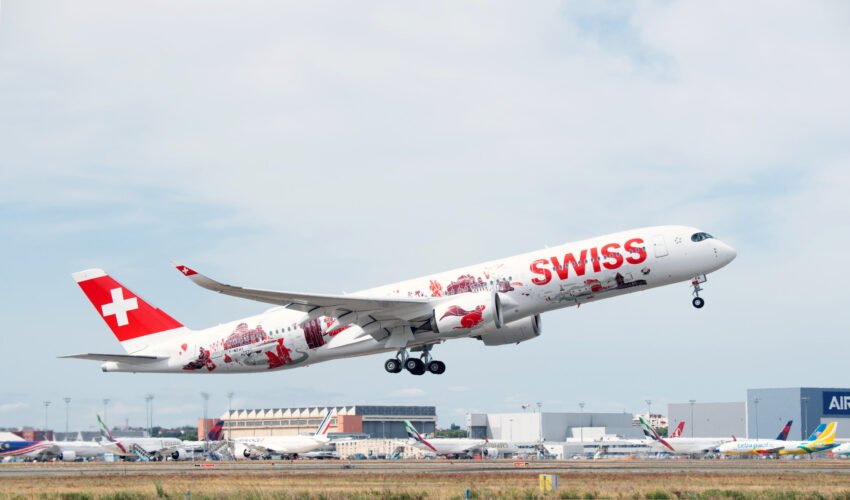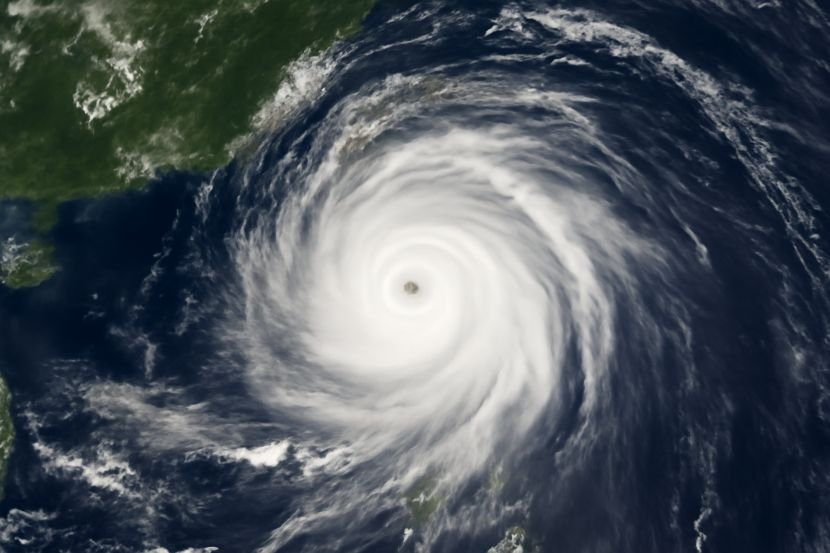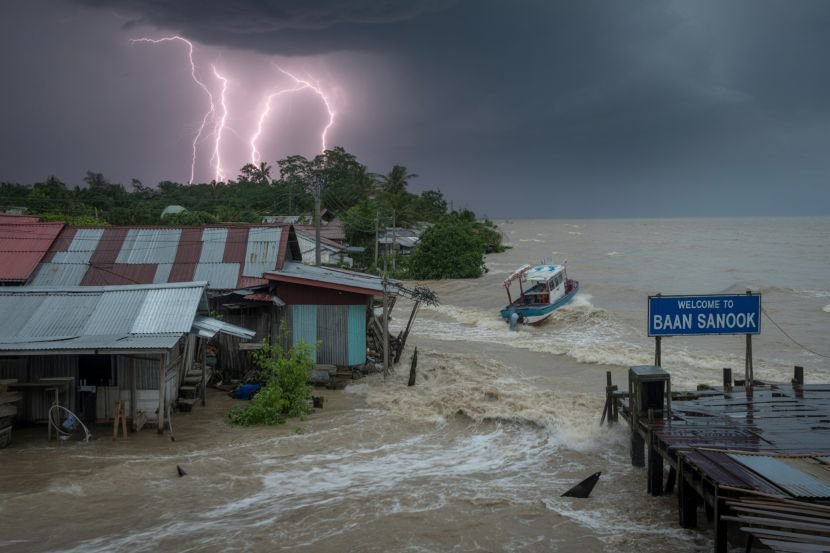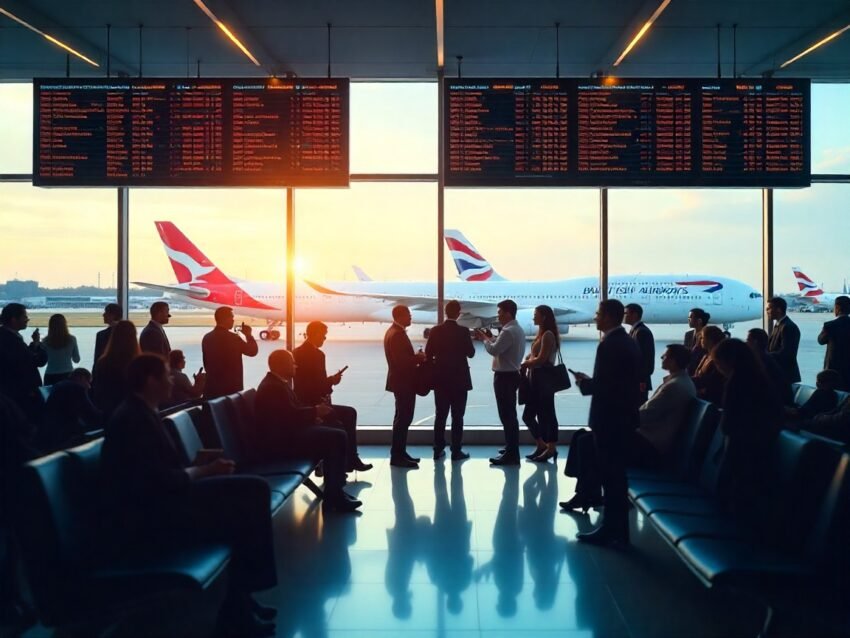Published on
September 23, 2025

As Super Typhoon Ragasa approaches East Asia, Emirates has announced the cancellation of several major flights, including routes from Dubai International Airport to Hong Kong and Shenzhen. The cancellations, which affect flights on September 23, 24, and 25, come as the typhoon strengthens into a category five storm, packing dangerous winds and storm surges that threaten the region.
The world’s largest international airline has taken precautionary measures in response to the anticipated impact of Ragasa, which has already wreaked havoc in parts of East and Southeast Asia, including the Philippines. With sustained winds reaching 215 km/h and gusts up to 295 km/h, the typhoon’s intensity has forced multiple airlines to adjust their schedules, with Emirates among those making significant changes to their flight operations.
Super Typhoon Ragasa: A Rising Threat to East Asia
Super Typhoon Ragasa, known as RAGASA-25 (Nando), has become one of the most powerful storms of the year, and its impact is being felt across the Philippines and nearby countries. The storm’s winds have already caused damage in Southeast Asia, with warnings for other countries in the typhoon’s path. Hong Kong and Shenzhen are among the cities bracing for the storm’s arrival, with officials preparing for storm surges of up to nine feet.
The Hong Kong Observatory and other local meteorological agencies have issued warnings about the incoming storm, which is expected to intensify as it nears the coast of southern China. In anticipation of the storm, the Hong Kong government has taken preventive measures, including evacuation orders for vulnerable coastal areas and warnings of severe flooding and damaging winds.
Emirates Responds to the Typhoon: Flight Cancellations and Disruptions
In light of the approaching storm, Emirates has cancelled multiple flights, including popular routes from Dubai to Hong Kong and Shenzhen. The cancellations are part of the airline’s efforts to ensure the safety of passengers and avoid operational disruptions during the typhoon. The following flights have been affected:
- EK382: Dubai to Hong Kong on September 23.
- EK383: Hong Kong to Dubai on September 23.
- EK380: Dubai to Hong Kong on September 23.
- EK328: Dubai to Shenzhen on September 23.
- EK329: Shenzhen to Dubai on September 23.
- Shuttle service: Hong Kong to Bangkok on September 23.
These cancellations have been extended to September 24 and September 25, with the following flights also being affected:
- EK382: Dubai to Hong Kong on September 24.
- EK383: Hong Kong to Dubai on September 24.
- EK381: Hong Kong to Dubai on September 24.
- EK380: Dubai to Hong Kong on September 24.
- Shuttle service: Hong Kong to Bangkok on September 24.
- EK381: Hong Kong to Dubai on September 25.
Emirates has stated that passengers traveling to or from Dubai with connections to Hong Kong or Shenzhen will not be allowed to travel until further notice. This precautionary measure is in place to ensure that passengers are not stranded at the airport due to the ongoing storm and airport shutdown.
Impact on Travelers: How to Rebook or Get Assistance
Travelers affected by the flight cancellations are advised to contact their travel agency for rebooking options or reach out directly to Emirates. The airline is encouraging passengers to ensure their contact information is up-to-date by visiting the Manage Your Booking section of the airline’s website. This will allow affected passengers to receive important updates regarding the status of their flights and any changes to their travel plans.
Emirates has also issued an official apology for the inconvenience caused by the cancellations and has assured passengers that it is closely monitoring the situation. The airline is committed to providing alternative solutions as soon as it is safe to resume services to and from Hong Kong and Shenzhen.
Alternative Options and Regional Impact
While flights between Dubai and Hong Kong have been suspended, travelers may look to other options for reaching East Asia. Cathay Pacific Airways, Hong Kong’s largest carrier, is also likely to experience disruptions due to the typhoon, with cancellations and delays expected across the region. Passengers are advised to check the status of their flights and stay informed about potential delays or cancellations.
Additionally, Shenzhen passengers may need to explore other connections via Guangzhou or Macau, both of which are well-connected to Hong Kong and may offer alternative routes to their destinations. Passengers are encouraged to reach out to their airlines or travel agencies for up-to-date information on available alternatives.
Super Typhoon Ragasa’s Broader Impact on Southeast Asia
As Super Typhoon Ragasa continues to wreak havoc across East Asia, other countries in the region are also bracing for its impact. The typhoon has already affected the Philippines, Taiwan, and parts of China, causing widespread damage and prompting evacuation orders. The severe weather is expected to cause flooding, landslides, and transportation disruptions throughout Southeast Asia in the coming days.
Hong Kong and Shenzhen: Preparing for the Worst
In Hong Kong and Shenzhen, authorities have ramped up preparations in anticipation of Ragasa’s landfall. Storm surge warnings have been issued, and residents in vulnerable coastal areas are being urged to evacuate. The Hong Kong government has mobilized emergency response teams, and residents have been advised to stay indoors until the storm passes.
The threat of heavy rainfall and strong winds continues to affect the region, with authorities cautioning the public about the risks of flooding, damaged infrastructure, and downed power lines. The region’s airports, including Hong Kong International Airport, have been taking measures to safeguard facilities and ensure that passengers are kept safe during the storm’s passage.
Looking Ahead: Recovery and Future Travel Plans
Once Super Typhoon Ragasa passes, authorities in Hong Kong and Shenzhen will work to restore normal operations at their airports and transportation hubs. Emirates and other airlines are expected to resume services once the storm has passed and it is safe to operate flights again.
Travelers are encouraged to stay updated on the latest weather forecasts and flight statuses to make informed decisions about their travel plans. The safety of passengers remains a top priority, and airlines and local authorities are working together to minimize the disruption caused by the storm.




